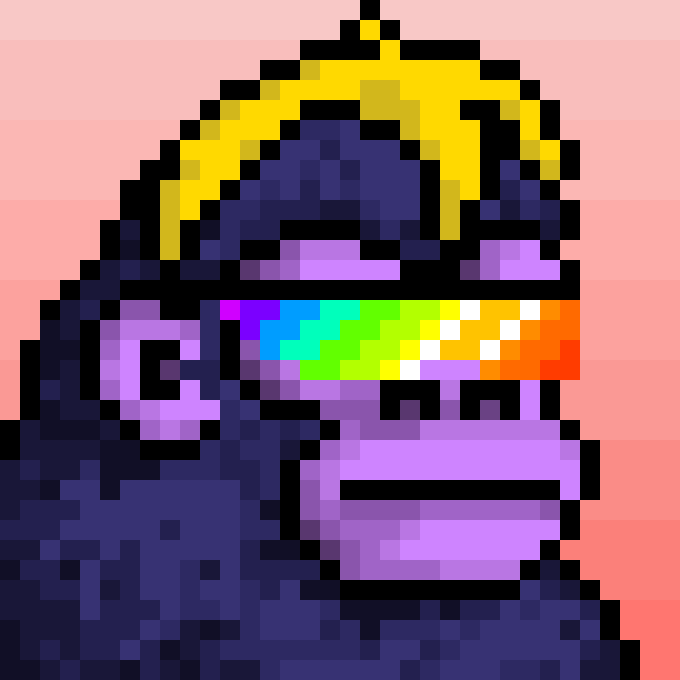TL;DR: With a new update or NFT collection being released almost every day, it’s clear the crypto ecosystem is constantly evolving. CryptoPhunks is one of the NFT collections paving the road to the digital universe — but it’s just the beginning. Knowing what brought it here and why it was created will lead you to make better decisions when investing or simply interacting with CryptoPhunks.
In this article, we’re gonna dive into the CryptoPhunks lore, answer all the CryptoPhunks related questions and even more. Prepare yourself for a fantasy story and a journey to the future of CryptoPhunks!
What is CryptoPhunks?
CryptoPhunks is an NFT collection of 10,000 pixelated PFPs that live on the Ethereum blockchain.
CryptoPhunks are a replica of the famous CryptoPunks NFT collection, except that the Phunks are facing left rather than right. Why, you might be wondering? Because Phunk the rules! 😎
CryptoPhunks was born as a counter-movement to the so-called decentralization charade of CryptoPunks creators, Larva Labs. To give more context, Larva Labs decided that owners of the NFTs have no actual copyright over the art that they own. In the minds of the Phunks, this tactic defeats the purpose of owning an NFT.
So what did they do? They literally turned the other cheek and made Phunks free of any constraints – no fees, no royalties.

Owning an NFT is different than screenshotting a JPEG - just like holding an original Rembrandt is more valuable than owning a replica. As their name suggests, NFTs are non-fungible by design. This is different from digital tokens like Bitcoin and Ethereum.
Fungible assets can be exchanged for another asset of the same type, much like BTC, ETH, or even fiat. NFTs, on the other hand, are unique assets where their ownership details are documented on the blockchain, ensuring digital scarcity and unique attributes for each asset.
But how exactly is digital scarcity being enforced?
The concept of NFTs first emerged in 2012 with the creation of Colored Coins, which could be used to represent real-world assets on the blockchain. However, Colored Coins only worked in a permitted environment, making it more similar to a database than anything else.
As the crypto industry became more popular, people have continued to experiment with the idea of a digitally scarce asset. This led to the creation of ERC-721 and ERC-1155.
The ERC-721 standard is like a set of rules for making NFTs. These actions help in making special tokens with their unique information, making them different from one another.
Behind the scenes, ERC-721 smart contracts keep a list of who owns which token, making it safe to pass tokens from one person to another. The contract also keeps count of how many tokens there are altogether and how many each person has.
As previously mentioned, CryptoPhunks NFTs are secured by the Ethereum blockchain. Ownership and transaction history are publicly visible on the Ethereum blockchain along with other important info such as the NFT's metadata.
Understanding how to access an NFT's metadata is essential for holders to grasp the specifics of what they're buying.
Metadata usually includes visual attributes like color, type, wearables, and so on. On the blockchain, it looks something like this:
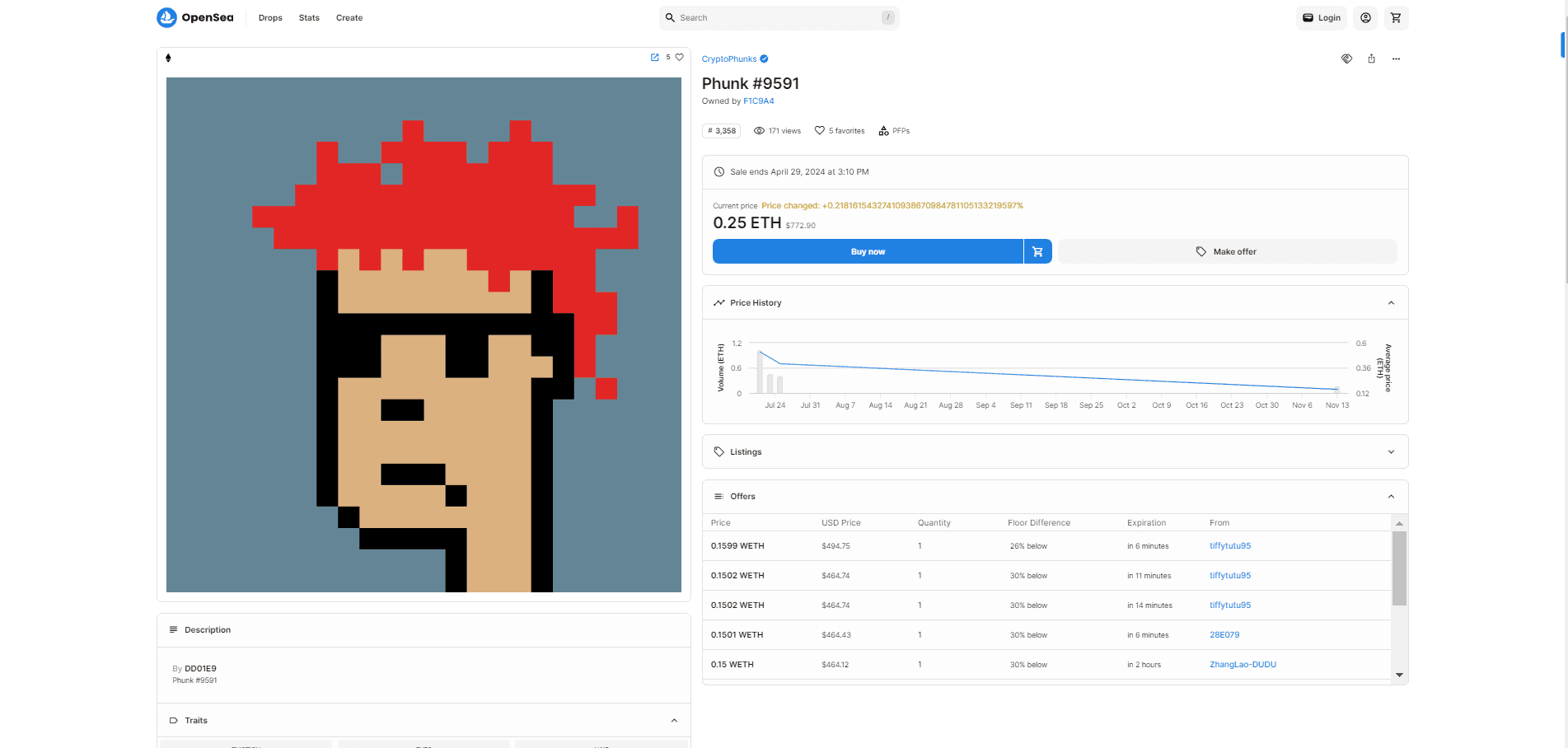
CryptoPhunks have their own set of traits that make up their uniqueness. These are: beard, cheeks, ears, emotion, eyes, face, hair, lips, mouth, neck, nose, sex, and teeth.
Some traits are rarer than others, which makes a specific NFT stand out from the rest. For example, there are only 9 Alien CryptoPhunks and 24 Ape CryptoPhunks in existence.

The CryptoPhunks NFT collection has been autogenerated. This means that out of the potential combinations, only 10,000 CryptoPhunks will ever exist!
What is the utility of CryptoPhunks?
CryptoPhunks make for an awesome avatar pic, but it’s also your ticket to join the Phunks DAO.
Owning a CryptoPhunk makes you a member of their community with full voting rights. As an official Phunk, you can help the community build new products such as NFT marketplaces, help with the media presence, and other actions that grow the CryptoPhunks community. And the best part is that you get compensated!
Due to their shaky history with Larva Labs and OpenSea, CryptoPhunks haven’t been able to really work on establishing beyond Web3. This is an opportunity for new and existing members to forge a new path for the CryptoPhunks brand.
As the CryptoPhunks brand expands, NFT holders will gain perks that are voted and designed together with the community. Whether you are hodling for a season or longer, the CryptoPhunks ecosystem continues to explore new ways of keeping holders engaged.
Who created CryptoPhunks?
CryptoPhunks was created by a group of anonymous devs in 2021 who then abandoned the Phunks community. Before that, a couple of important events happened.
The first one goes back to 2017 when an organization called Larva Labs created 10,00 CryptoPunks as NFTs. These Punks were snapped up by people; they weren’t worth very much at that point. After the 2019-2020 bear market finished, CryptoPunks began gaining traction, changing hands for a couple of hundred dollars. Even companies like Visa bought one.
The funny thing about CryptoPunks is that the copyright licenses weren’t very clear, until 2019 when Larva Labs clarified that the NFT owners don’t actually own the copyright to the NFT image that they have bought – that remains with Larva Labs. By owning a CryptoPunnk what you get is the right to exploit the image for up to $100,000 per year, but you don’t own it. And if you’re selling the NFT, you’re not really selling on much other than the right for that person to then go and exploit the image up to $100,000.
The NFT community was outraged by the decision. It was going against all that NFTs were about – actually owning a piece of art. This outrage fueled the creation of CryptoPhunks.
The second important event happened in 2021, when a group of people decided that they were going to launch a fun, derivative concept from the CryptoPunks, called the CryptoPhunks. What they did was copy the CryptoPunk images and flip them so they look to the left (instead of CryptoPunks looking to the right). These NFTs were then released on OpenSea for people to acquire them.
OpenSea had just raised $100 million, valuing the company at $1.5 billion. They’ve also had a number of problems over time. Shortly after, it was revealed that the head of product, Nate Chastain, had been insider trading, effectively buying NFTs before they were listed on OpenSea.
Another problem for OpenSea was something called “sleepminting.” Sleepminting is where somebody publishes a contract, and then mints tokens to the address of a famous artist using the artist’s image. It is a very passable fake of the famous artist NFT.
The person who discovered the bug, called Monsieur Personne, used Beeple’s artwork as an example. He utilized sleepminting to mint NFTs on behalf of other artists and within their crypto wallets, subsequently regaining ownership without their consent or knowledge. Despite this, all these transactions appeared authentic on the blockchain record, giving the impression that the unsuspecting artists had initiated them independently. This loophole opened up the potential for widespread sophisticated fraud.
To illustrate his point, on April 4, Personne sleepminted what purported to be a "second edition" of Beeple’s record-breaking artwork "Everydays: The First 5,000 Days," a digital creation and its associated token that had recently fetched a staggering $69.3 million at Christie's less than a month prior.
Now, back to the CryptoPhunks story…
The CryptoPhunks were listed on June 14, 2021, and they started selling for 0.1-0.2 ETH. People liked the idea of owning a CryptoPhunk that looked exactly like a CryptoPunk.
Larva Labs founders were furious about the situation. How could OpenSea allow listing such an obvious “ripoff” of the OG collection?!
At that point, Larva Labs issued OpenSea with a Digital Millennium Copyright Act (DMCA) takedown notice. DMCA is an act passed by the US Congress that strengthens the rights of copyright holders. This act gives the copyright owner (Larva Labs) to issue a takedown notice on a platform that hosts the infringing material. The platforms don’t have to do with investigating, they are simply obligated to take it down from their platform – or face a giant lawsuit.
And that’s exactly what happened! OpenSea took down the CryptoPhunks from their web frontend.
So, all good now, right?
Well, no. You see, OpenSea also has a backend contract, called Wyvern. It is a collection of smart contracts that handle all sorts of auctions, sales, and other ways of selling your NFTs.
A bunch of people owning CryptoPhunks have put their NFTs – or should we say “had put control of their NFTs into Wyvern” – and listed them at around 0.1-0.2 ETH.
When OpenSea took down the NFTs from the front end, they didn’t take down the backend. That meant that people who knew how could transact CryptoPhunks using the Wyrven smart contracts directly.
With the OpenSea scandal in the rearview mirror, people went off and made other marketplaces to trade CryptoPhunks. The price of CryptoPhunks went up to the point where they were now selling at around 0.5-0.6 ETH, even as high as 1 or 2 ETH.
Wait, the story keeps going 🍿
On June 23, the CryptoPhunks community agrees to change the project name to “Not Punks” and adds rarity borders to make them more derivative. Nate Chastian, who was still the head of product at OpenSea, relisted the CryptoPhunks.
5 days later, a team of OpenSea employees decided the CryptoPhunks were “not derivative enough,” so they delisted CryptoPhunks from OpenSea for a second time.
On July 2, the 10,000th CryptoPhunk had been minted and the community had 621 unique holders. The next day, OpenSea relisted the CryptoPhunks collection only to delist it again on July 13.
OpenSea set a significant precedent by removing Phunks from its listings, not just once (on June 21st), but twice (on June 24th). This action prompted an immediate response from the Phunk community, advocating for transparency and fairness. The events unfolded amidst a flurry of interactions on social media involving Nate Chastain (Head of Product) and other individuals at OpenSea, all recognizable by their OG Punk profile avatars. This conflict with OpenSea became a defining moment for the community, and owning a CryptoPhunk became a way to forever commemorate this ongoing struggle against centralization.
The community initially attempted to engage with OpenSea in a civil manner to understand the reasons behind the delisting, but these efforts led to dead ends. OpenSea seemed to have created a closed-off environment, limiting access and dialogue. The community then reviewed their communications and website to identify any potential issues with the project. They questioned if their approach was too playful or if they resembled OG Punks too closely. However, they found no reports from those who had minted a Phunk suggesting they believed these were authentic Punks.
Questions were raised to OpenSea regarding the specific concerns. The Phunk community sought to understand if they had inadvertently parodied friends of OpenSea and why OpenSea had assumed the authority to define what constituted a parody. They questioned the contradiction of presenting themselves as "the largest decentralized NFT marketplace" while acting as a centralized authority. The inquiry extended to potential influences from corporate owners or preferences toward certain poster-child projects.
On July 20, the CryptoPhunks developer team released "Phunk is Punk – A Letter to Larva Labs" on the Foundation.
Refusing to engage with LarvaLabs' DMCA, the CryptoPhunks developers post a mysterious announcement on Discord, clear out the project wallet, and vanish.
On April 13, 2022, OpenSea relisted the CryptoPhunks collection after receiving a DMCA counter notice from the CryptoPhunks community.
In May 2022, the developer behind Azuki, using the pseudonym ZAGABOND, publicly acknowledged being the original creator of CryptoPhunks. This revelation was accompanied by an apology and a transfer of smart contract ownership, along with 496 CryptoPhunks NFTs and $1.44 million in royalties, to the Phunks community.
Who is developing CryptoPhunks now?
CryptoPhunks is being maintained by the community of Phunk holders who adhere to the Phunk manifesto.
The Phunks movement champions decentralization, discarding reliance on powerful bodies for privacy and art definitions. Embracing freedom of expression, they create their own communities, resisting centralized control. Their art mirrors life's raw, unrefined essence, unapologetically bold.
Advocating for anonymous transactions using electronic technologies, Phunks envisions a future where decentralized art flourishes, standing resilient even without mainstream approval. Their resolve lies in forging vibrant art-centric communities, defying conventional norms, and amplifying their collective voice against centralized authorities in the art world.
PhunksDAO uses an on-chain governance structure where Phunk holders get a vote for each Phunk NFT they own. The DAO gets to allocate funds from their treasury for contributors.
The Treasury is a multi-sig wallet, managed by 5 of the most influential community members. Initial funding came from Zagabond, who funded 496 CryptoPhunks NFTs and $1.44 million in royalties back to the community.
Phunks have two digital headquarters: the Not Larva Labs website, and the Phunks Discord.
Part marketplace, part conceptual art piece, Not Larva Labs is parodies Larva Labs. The website is maintained by prominent members of the CryptoPhunks community (Pauly, Chopper, and Kenobi).
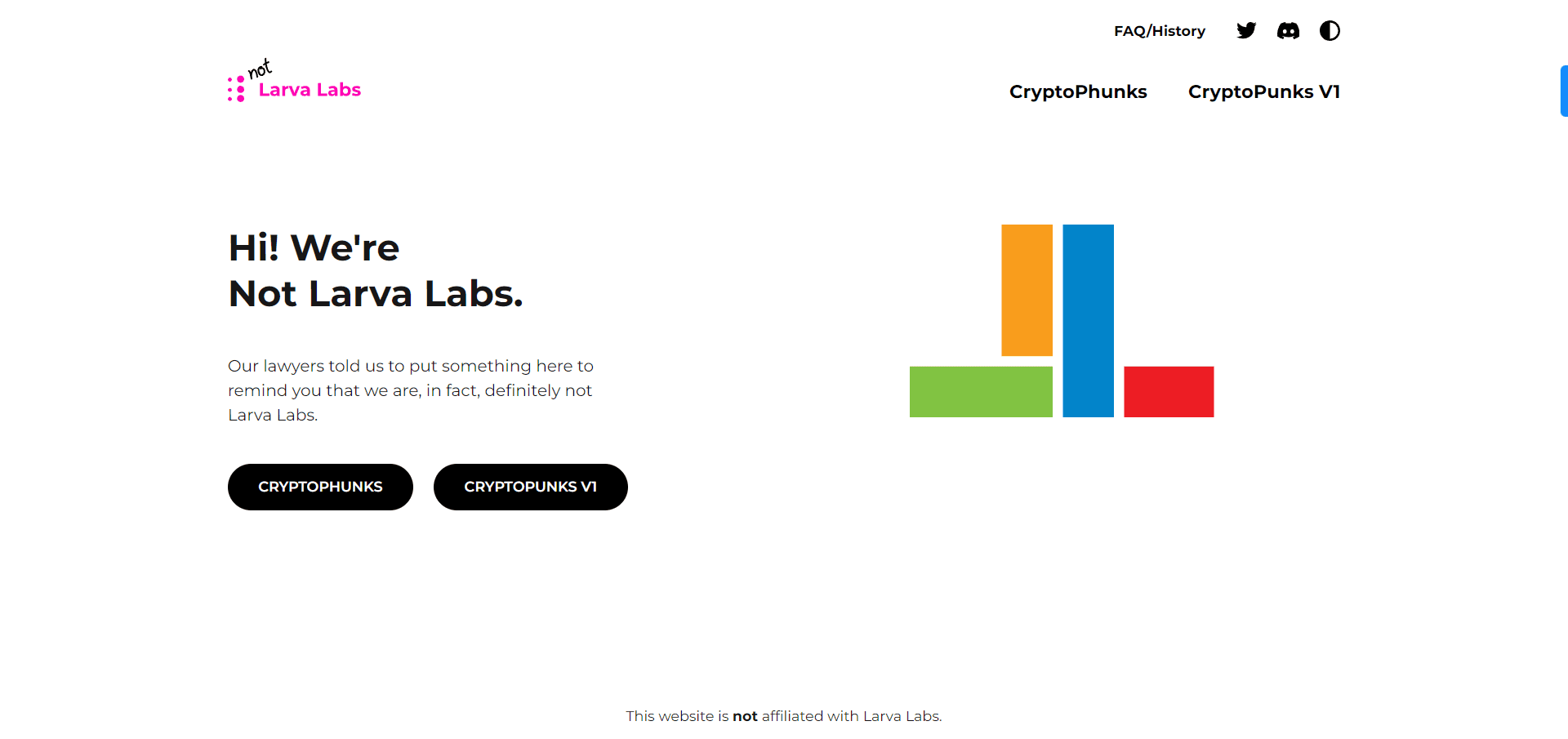
The Phunk Discord server is where the community gets to vote on proposals, hang out, and kill time.
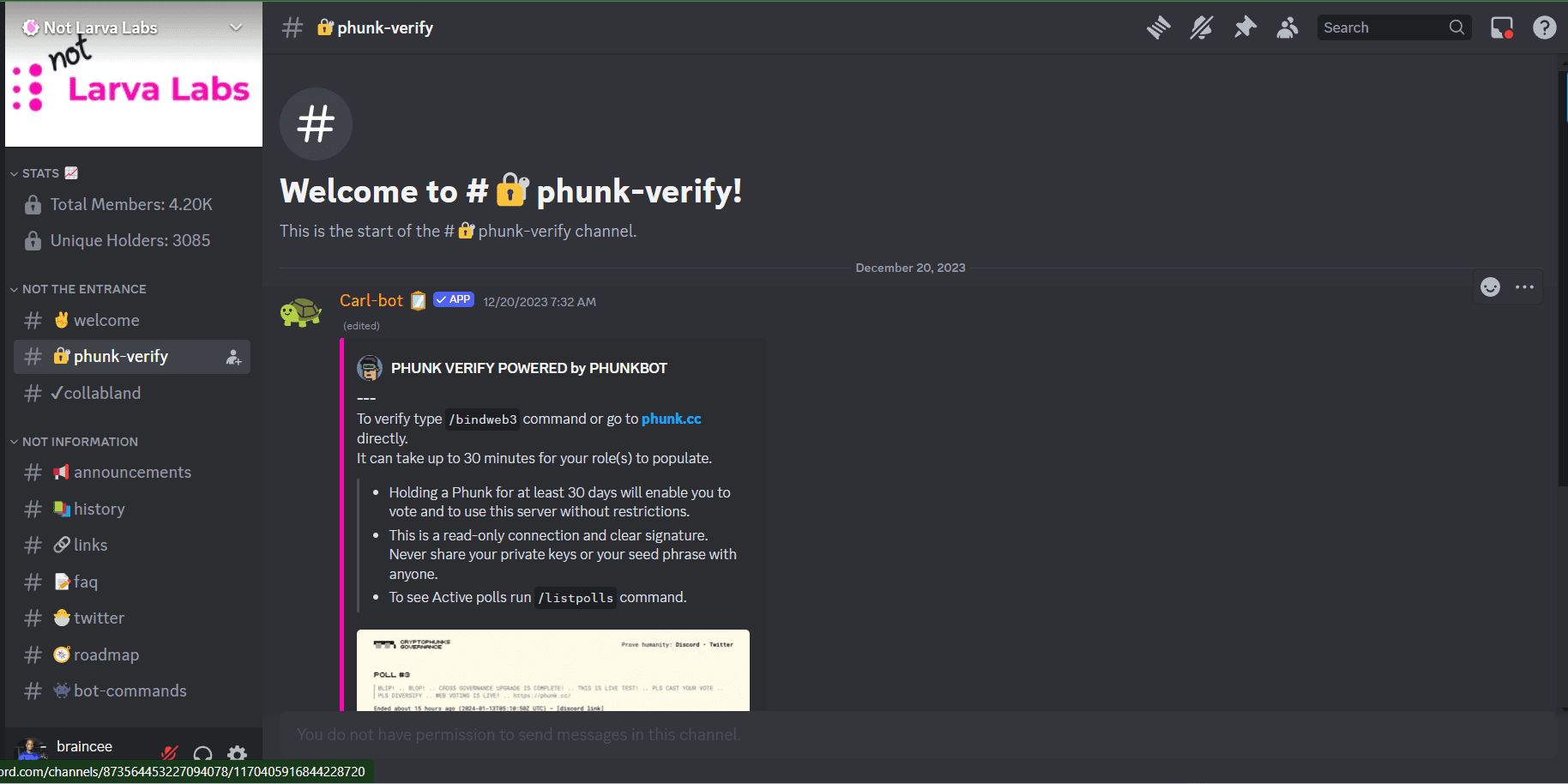
The Phunk community is focused on building its own decentralized NFT marketplaces, where people can trade Phunks and other NFTs as well.
phunkyJON and whale-goddess have started working on such NFT marketplace in 2022. They aimed to create a complete marketplace experience with profiles, chats, and other cool features. They even thought of creating $PHUNKY token (made by dvcoolster, a CryptoPhunk community member) for transactions, along with other tokens like Ethereum.
Unfortunately, development has been halted on September 27, 2022. phunkyJON was suspected by the community of being a scammer, operating tornado cash wallets and writing compromised code.
Few weeks later, the Phar.out marketplace made a comeback, and it now serves as one of the hubs where you can buy a CryptoPhunk. The marketplace is run and maintained by PharOut Labs.
Investors are also an important component in building an NFT ecosystem. Although they don’t get involved directly in the governance of the project, they do exert an influence over the brand’s expansion into the mainstream. As of 2023, CryptoPhunks hasn’t received any strategic funding, and they don’t plan on doing so.
How does CryptoPhunks make money?
Now, let’s get to the juicy part – how do CryptoPhunks make money?💰 (No, flipping and rug pulling are not the correct answers)
The answer to this question is strongly related to intellectual property.
Think of popular trademarks such as Mickey Mouse, Spider-Man, or Coca-Cola. Every time you see movies, books merch, or posters with them, know that the owners of the IP get a share of the profits. The same thing goes for NFT holders, in theory.
When it comes to NFTs, it’s quite challenging to fit them into the traditional framework of copyright law. To give more context, owning an NFT doesn’t mean holders have automatic control over the creative work. This creative control needs to be granted by the creator.
As such, NFT holders should pay attention to what IP rights, if any, come with owning the NFT.
From the tumultuous history of CryptoPhunks, their rules are simple: “no fees, no royalties. Phree. Phunky.” This means Phunk holders are free to monetize their NFT in whichever way they see fit.
The mission of CryptoPhunks is to defend decentralization and freedom of expression.
Phunk holders act independently to create systems which allow anonymous transactions to take place.
Given the larger scope of the Phunk community, there are no clear plans for monetization for the Phunks DAO. Rather, they seek to build their own services that adhere to the Phunk ethos.
That being said, CryptoPhunks have been engaged in a handful of collaborations to boost their presence in the Web3 space.
One of them is Phunky Socks — an experiment on Ethereum blockchain where a real physical pair of Socks, limited to 50 pairs, are backed by 22 ERC20 tokens each. $PHUNKYSOCKS tokens can be used to trade, swap or to be burned for real pair of Phunky Socks shipped anywhere in the world.
A full list of independent Phunk-themed merch can be found on the CryptoPhunks Discord.
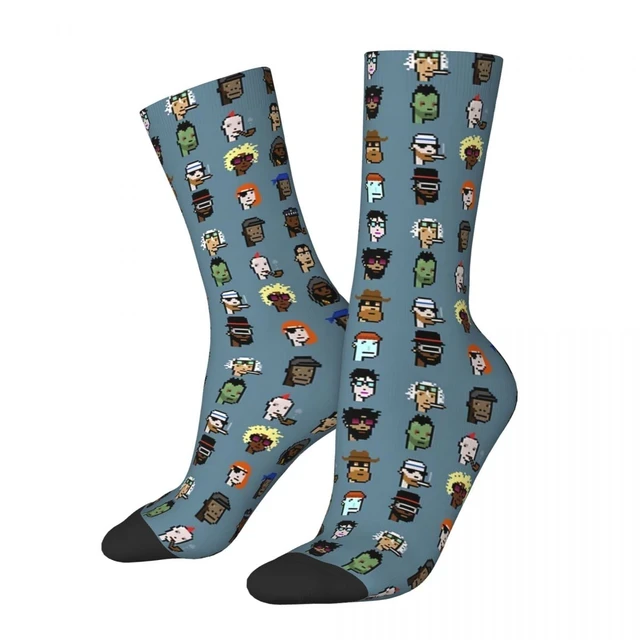
Another interesting way to engage the Phunks community is via a newsletter aimed at spreading Phunkism on a consistent basis. The creator of the newsletter is Tenchi.
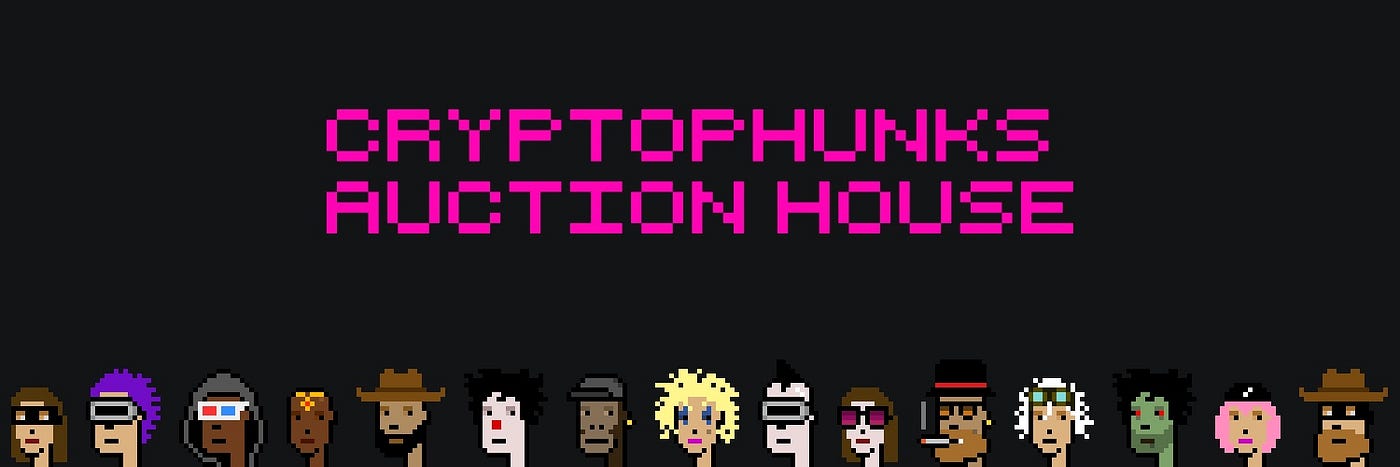
As of 2023, the focus of the CryptoPhunks community is to create a knowledge base for the collection and to promote its truly decentralized NFT marketplace.
Where can I buy CryptoPhunks?
You can buy CryptoPhunks on OpenSea (oh, the irony), Blur, and Pharout.space.




























